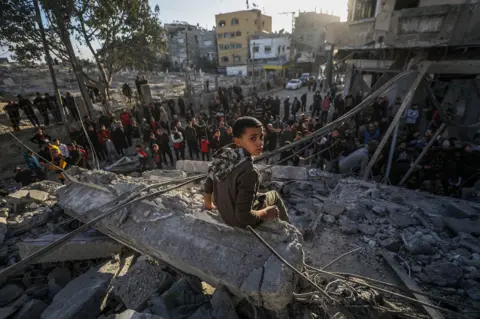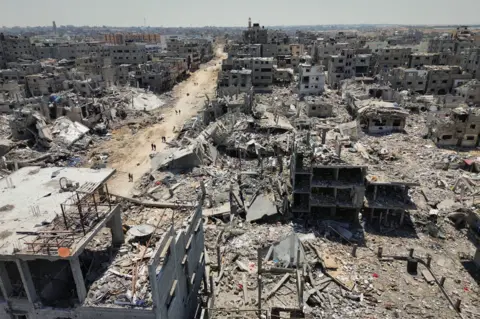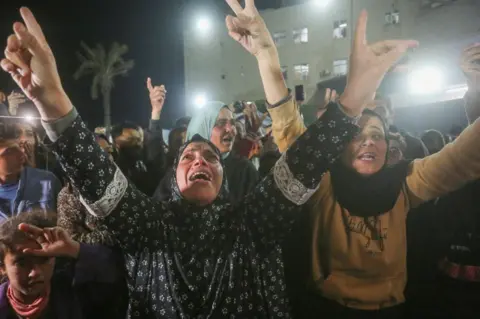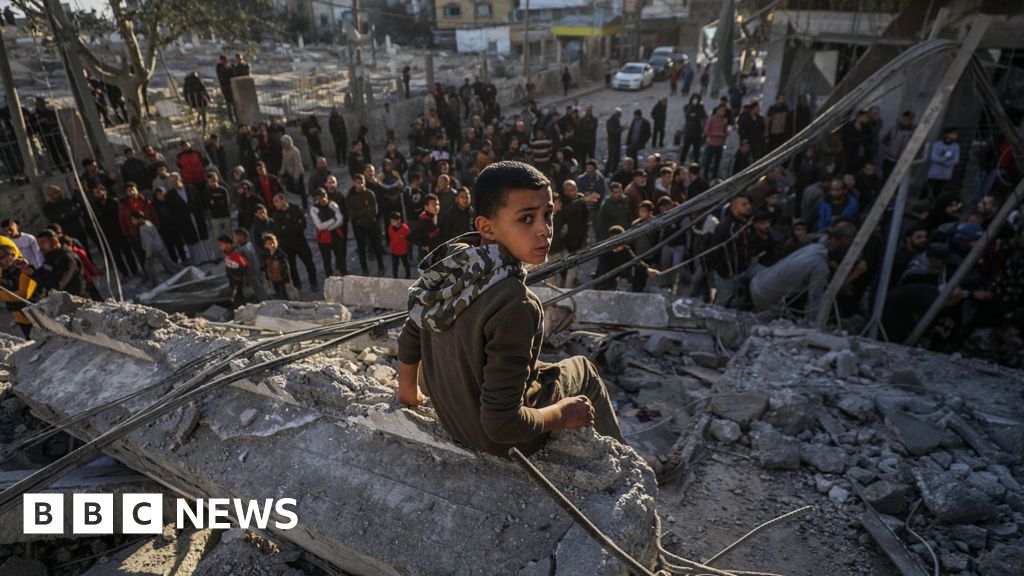 EPA
EPACivilians in Gaza were waiting anxiously on Friday for a pause after 15 relentless months of war, as Israel’s cabinet met in Jerusalem to finalise a temporary ceasefire deal with Hamas.
As they waited, Israel pounded the strip with air strikes, killing at least 113 people since the deal was first agreed in principle on Wednesday night, according to the Hamas-run civil defence agency in Gaza.
The deal, finalised on Friday afternoon, is due to come into effect on Sunday, leaving a little over 24 hours more for the people of Gaza to hang on for respite.
“Time is moving slower than ever,” said Dr Abdallah Shabir, 27, an emergency doctor at the Baptist Hospital in Gaza City. “Any moment you can lose your life,” he said. “Sitting at home, walking in the street – there is no warning.”
Dr Shabir was on shift at the hospital on Wednesday night when the news of the ceasefire agreement came through. There was a brief moment of joy, he said, but less than an hour separated the announcement from the beginning of a wave of air strikes that sent a flood of dead and wounded to the Baptist.
Every member of staff was summoned. “It was as bad as we have ever seen,” Dr Shabir said. “Severe injuries, severe burns. Many dead, of course.”
 EPA
EPAAmong the dead brought in on Thursday was a colleague, Hala Abu Ahmed, a 27-year-old specialist in internal medicine who two colleagues at the Baptist described as a devoted and promising young doctor and a kind person.
She had worked tirelessly and under extreme pressure for 15 months, since the war began, said Dr Ahmad Eliwah, the chief of the emergency department, and been killed after the ceasefire was agreed.
Among the millions of displaced in the strip, many were waiting on Friday for the moment they could return home for the first time since the war began. Many will find a bombed out wasteland in place of their home.
“My house is completely destroyed, the building is gone,” said Sabreen Doshan, 45, who owned a street kiosk and lived in a residential block in Gaza City.
Doshan had lost 17 members of her wider family since the war began, she said. She was poised to set out from Deir al-Balah in central Gaza, where she has been living in a tent, for the ruins of her home.
“Even if I have to put my tent on rubble it will be OK, because I will be home,” she said. “Nowhere can satisfy me now apart from home.”
The destruction of the Gaza Strip is immense. According to a recent analysis by the United Nations Satellite Centre, 69% of all structures and 68% of roads have been destroyed or damaged, as of December. About 46,700 people have been killed, according to the Hamas-run health ministry.
Israel set out to destroy Hamas in Gaza in October 2023, after the group attacked southern Israel, killing about 1,200 people and taking 251 hostages.
For Gazans, the joy of the long-awaited ceasefire has been tempered by the scale of the death and destruction. “By God, it is a mixed feeling,” said Wael Muhammad, a freelance journalist living in a refugee camp in central Gaza.
“From one moment to another, from joy to pain,” he said. “I am happy that the torrent of blood will stop, but we are living in misery.”
 Getty Images
Getty ImagesOn Friday afternoon, the ceasefire deal was making its way through the Israeli political system for final approval. It paves the way for an initial group of three hostages to come out as early as Sunday, in exchange for some 95 Palestinian prisoners.
But the exchange, which will play out over the next six weeks, is fraught with the possibility of collapse.
“The biggest challenge is whether the ceasefire is going to be successfully implemented,” said Juliette Touma, communications director for the UN refugee agency UNRWA.
“If it is, the challenge ahead remains absolutely huge. The vast majority of shelters are overcrowded. Many are simply living out in the open, or in makeshift structures. They lack basic needs like warm clothes. I would not call these living conditions, they are not conditions fit for human beings.”
In Gaza on Friday, some were focused on Sunday, and whether they would make it to that respite without the deal falling apart.
“We are afraid of any change, any movement,” said Khalil Nateel, 30, whose house in Jabalia in the very north of the Gaza Strip was destroyed early on in the war.
“The news is on,” Nateel said, from a shelter in central Gaza. “We are watching and waiting.”












